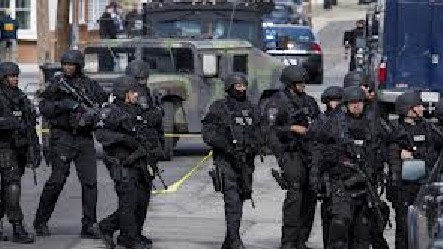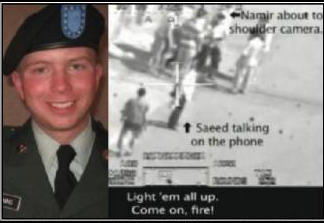“In order to get our message before the public with some chance of making a lasting impression, we’ve had to kill people.”
-Ted Kaczynski, The Unabomber Manifesto, 1995
April 19, 2013, is a date to remember, not so much for the killing and capture of two “terrorists,” but as a milestone in the rise of the 21st century American surveillance police state.
A well-oiled fusion of federal, state and local police authorities went through hundreds of hours of surveillance video and employed all sorts of secret technological and human assets to quickly identify the perpetrators of the crime that captivated the nation’s imagination. Then, thanks to a carjack victim who apparently escaped, the nation witnessed a daylong, blow-by-blow media account of one of the most oppressive manhunts in history. A major northeastern metropolitan area was completely shut down in what amounted to a state of martial law.
 Two scenes from 4/19 in Watertown, Massachusetts
Two scenes from 4/19 in Watertown, Massachusetts
After Tamerlan Tsarnaev had been killed and his brother Dzhokhar captured, instead of a “perp walk,” TV watchers were given a triumphalist parade of all the gathered police and FBI vehicles with lights still flashing. The vehicles passed one-by-one through a gauntlet of relieved Watertown residents who began to spontaneously applaud, cheer, grin, pump their fists in the air and even thrust delighted, giggling babies into the air.
Sitting at home bouncing around between MSNBC, CNN and Fox News, by that point I would not have been surprised to see local suburban police units touring my neighborhood in a sympathetic triumphalist procession with the lights on their squad cars and SUVs blazing and my neighbors cheering.
But then the internet conspiracy theorists went into rabid mode certain the federal government had done the bombing, while their counterparts, nationalist war-lovers, began to work feverishly to link the bombers to some large and menacing Muslim threat of suitable grandeur for such a magnificent display of surveillance police power.
Just another day in America, circa 2013.








